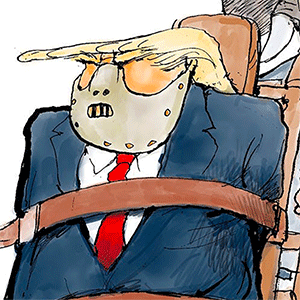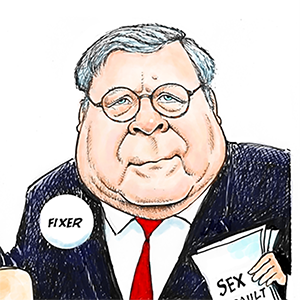SpaceX Crew-10 makes splashdown return to Earth
Published in Science & Technology News
ORLANDO, Fla. — The four members of the SpaceX Crew-10 mission climbed aboard the Crew Dragon Endurance and departed the International Space Station on Friday evening for an overnight trip and safe splashdown back on Earth.
NASA astronauts Anne McClain and Nichole Ayers, JAXA astronaut Takuya Onishi and Roscosmos cosmonaut Kirill Peskov launched to the station back on March 14 from Kennedy Space Center. After four-and-a-half months on board, they undocked at 6:15 p.m. and completed a 17 1/2-hour trip home for a splashdown off the coast of San Diego at 11:33 a.m. Saturday.
“For the entire crew, thank you for that flight. Truly an honor of a lifetime,” Crew-10 commander McClain said after landing. “I’d say take 20 minutes … get to the back of the line and then go again.”
The Dragon completing its fourth trip to space broke through low cloud cover at the landing site near San Diego on a parachute-assisted, gentle descent of about 15 mph. The spacecraft had been going more than 16,500 mph an hour earlier before performing its deorbit burn during which it endured temperatures near 3,500 degrees Fahrenheit.
Despite some choppy seas, SpaceX was able to haul it up onto a recovery vessel, crack open the side hatch and give its four passengers their first breaths of fresh air in nearly 148 days.
“Crew is ready to return to the atmosphere, ” McClain had said before reentry.
All four were offloaded and helped onto stretchers for medical checkouts within an hour of splashing down. They will be flown back by helicopter to shore, then go by plane back to their homes in Houston, Japan and Russia.
The undocking Friday went off on time as the space station population dropped from 11 to seven.
“It has been an absolute privilege to cross paths with you,” McClain said as the Dragon drifted away from the station. “Godspeed.”
She had also led the mission’s farewell ceremony earlier in the week.
“We really want to lead with gratitude for the absolute privilege of getting to live and work aboard this amazing International Space Station,” she said. “All of us are keenly aware that we may never get to do this again, and we’ve been very pensive over the last days of understanding what we have all got to be a part of.”
Ayers was the first from her NASA astronaut class chosen in 2021, known as The Flies, to make it to space.
“We got to see some amazing views and we have had some really big belly laughs and a wonderful time together,” she said about her Crew-10 crewmates. “Leaving with a heart full of gratitude and excited to see where the International Space Station goes after we get home.”
While McClain is the Crew-10 commander, Onishi had been the Expedition 73 commander for the station. He handed over command to Roscosmos cosmonaut Sergey Ryzhikov during a ceremony Tuesday before departing. Ryzhikov is part of the Soyuz crew that flew up in April and won’t leave until December.
“I wish we could spend more time together,” Onishi said about Crew-11 replacements that arrived last weekend. “But you are in good hands. So I’m sure the second half of Expedition 73 will be even better. … Crew-10 is now leaving, but the science will continue here, because this place is the outpost for human beings to advance our technology and to explore further.”
The California splashdown marks the first time a NASA mission with SpaceX has landed on the West Coast with 10 previous crewed missions for NASA (Demo-2 and Crew-1 through Crew-9) on SpaceX Crew Dragons having splashed down off the coast of Florida instead. It’s the first time since the Apollo-Soyuz mission ended in 1975 that NASA astronauts have made a Pacific landing.
SpaceX made the shift in coasts after several incidents of debris showing up on land around the world that turned out to be remnants of the Crew Dragon trunks, which had previously been discarded at higher altitudes during deorbit. Now the trunk is more safely discarded over the Pacific as it comes in for its landing. SpaceX has already knocked out two California landings this year on private missions Fram2 and Axiom Space’s Ax-4.
For Crew-10, the mission was the shortest so far for an operational flight under NASA’s Commercial Crew Program. The longest has been Crew-8 from March-October 2024 at more than 235 days. Most have been around six months long.
The reason Crew-10 was short was twofold. It was originally targeting a February liftoff, but a delay from SpaceX with its fifth and final Crew Dragon forced a shuffle so Crew-10 flew with Endurance and the private Ax-4 mission ended up with the new vehicle, which they named Grace.
Its departure was also needed before the planned CRS-33 cargo Dragon mission slated to arrive later this month, as it would need somewhere to park, and the station has only two ports that can handle Dragon spacecraft. That cargo Dragon has a special reboost capacity built in that will be used to elevate the space station’s altitude, a first for SpaceX. The Russian Progress spacecraft are usually the ones responsible for space station reboost, but NASA is trying to store up fuel reserves for the eventual need to bring the space station back down to burn up in Earth’s atmosphere when it’s decommissioned after 2030.
Endurance debuted in 2021 on Crew-3 followed by the Crew-5 mission in 2022 and Crew-7 in 2023. It left behind the Crew-11 crew, who arrived last weekend in the fleet-leading Crew Dragon Endeavour. It was the first SpaceX Crew Dragon to fly with humans back in 2020 on the Demo-2 mission and is now amidst its sixth trip to space. The other Crew Dragons are Resilience, Freedom and Grace.
Crew-11 is not slated to leave the station until next year after at least six months, although NASA and SpaceX are looking into potentially stretching that mission to eight months.
Crew-10’s arrival in March was part of the Starliner saga as it was the relief crew to the station that allowed for Boeing Starliner’s two astronauts to finally come home after nearly 10 months in space.
Starliner flew up to the station on the Crew Flight Test in June 2024, but the spacecraft suffered helium leaks and thruster failures on its propulsion system before docking. NASA ultimately chose to send Starliner home without crew in September — meaning NASA astronauts Butch Wilmore and Suni Williams had to remain on board the station until SpaceX was able to fly up a Crew Dragon with a pair of open seats that would allow them to fly home.
While Crew-9 arrived at the station in fall 2024, Williams and Wilmore had to remain on it until Crew-10 arrived and Crew-9 was able to make it home.
The Commercial Crew Program originally contracted with Boeing and SpaceX to each build spacecraft to take over the responsibilities of shuttling astronauts on U.S.-based launches to and from the space station. NASA had to rely on Russia for rides to the station on Soyuz flights since the end of the Space Shuttle Program in 2011.
Both SpaceX and Boeing faced issues getting their test flights up and running, but SpaceX eventually returned U.S.-based orbital flights nearly nine years later.
Since Demo-2, SpaceX has flown its fleet of five Crew Dragons 19 times with 74 human passengers. Boeing suffered issues on its initial uncrewed Starliner flight in 2019 that forced a follow-up uncrewed flight that had its own issues to not fly until 2022. The CFT flight was supposed to open the door for NASA to trade off rotational flights between SpaceX and Boeing with each company flying once a year to support station operations.
Boeing and NASA, though, are back to fixing the issues found on the CFT mission with its next flight potentially reverting to an uncrewed mission to the station to ensure its propulsion systems are safe. Then NASA could begin flying operational missions with Starliner.
SpaceX, though, is likely to fly Crew-12 for the next rotational mission sometime early next year.
NASA only needs enough flights from among the two companies to support staffing on the station until it’s decommissioned. At most that would likely mean 10 more missions, but it might become less if stays on board get stretched.
The Trump administration has recently pushed to pull back on the number of flights needed to the station before it’s decommissioned as well as limiting the number of astronauts.
This all falls within a larger plan to invest more in NASA’s efforts to get back to the moon and onto Mars while relying instead on future commercial space stations from companies, like Axiom Space, Blue Origin and Vast, to satisfy any low-Earth orbit needs.
©2025 Orlando Sentinel. Visit at orlandosentinel.com. Distributed by Tribune Content Agency, LLC.






Comments